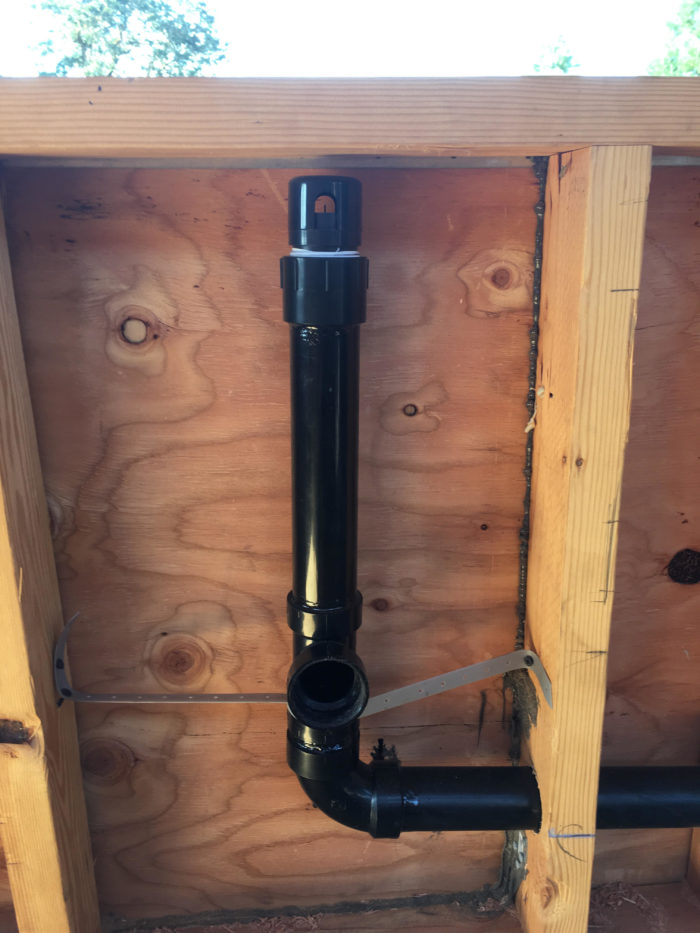Have you been interested in help concerning What Is A Plumbing Vent & How Do They Work??

Correct ventilation in pipes systems is usually ignored, yet it is essential for preserving the functionality and security of your home's pipes. Air flow assists control air pressure, prevent the accumulation of damaging gases, and make sure the effective removal of waste. In this overview, we will certainly explore the significance of correct plumbing ventilation, just how it works, and the advantages it gives your pipes system.
Exactly How Ventilation Functions in Pipes Solutions
Air Pressure Guideline
Proper ventilation keeps balanced atmospheric pressure within the plumbing system. When water streams through pipelines, it displaces air. Without appropriate ventilation, this displacement can produce negative pressure, bring about slow down drains or siphoning of water from catches, which can create unpleasant odors to seep into the home.
Protecting Against Drain Gas Accumulation
One of one of the most important features of pipes vents is to stop sewage system gases, such as methane and hydrogen sulfide, from gathering within the home. These gases can pose serious health and wellness dangers and are extremely flammable. Vent pipes allow these gases to escape securely outdoors.
Helping in Waste Removal
Air flow helps in the effective removal of wastewater by preventing airlocks in the water drainage system. When air can stream freely via the vents, it enables water and waste to move efficiently through the pipes, minimizing the threat of obstructions and back-ups.
Benefits of Correct Air Flow
Boosted System Performance
Correctly ventilated pipes systems run much more efficiently, with fewer blockages, faster draining, and less stress on the pipes. This effectiveness expands the life-span of the plumbing system.
Improved Air High Quality
By protecting against sewer gases from entering your home, proper ventilation contributes to much better interior air top quality, making your living setting healthier and extra comfy.
Protecting Against Water Damages
Ample air flow helps protect against water from being siphoned out of traps, which can bring about drain gases getting in the home and triggering water damages in time.
Actions to Guarantee Appropriate Ventilation
Consulting Pipes Codes
Always consult neighborhood plumbing codes when creating or customizing your plumbing system. These codes offer the essential standards for correct venting and ensure your system satisfies safety and security standards.
Routine Examination and Maintenance
Routine assessments can aid determine potential ventilation problems prior to they become significant troubles. Maintenance jobs, such as cleaning vent pipes and looking for blockages, are vital for maintaining the system in good working order.
Expert Setup
For new installments or major alterations, it's smart to employ a professional plumber. They have the proficiency to ensure the ventilation system is correctly created and installed according to code.
Understanding Ventilation in Pipes
Air flow in plumbing describes the network of pipelines that permit air to stream via the water drainage system. These vents offer numerous purposes, including managing atmospheric pressure within the pipes, avoiding sewer gases from getting in the home, and assisting in the smooth flow of wastewater.
Types of Plumbing Vents
Main Heap Vent
The primary stack vent, additionally known as the air vent pile, is the primary air vent in a pipes system. It extends from the primary drainpipe line up with the roof covering, allowing gases to get away and fresh air to get in the system.
Branch Vent
Branch vents connect to the major pile air vent and offer individual components, such as sinks, bathrooms, and showers. These vents make certain that each fixture has sufficient air flow to work correctly.
Air Admission Shutoff (AAV).
An Air Admittance Shutoff (AAV) is a one-way valve that enables air to get in the pipes system without the demand for a standard vent pipe expanding via the roof. AAVs are commonly used in remodellings or areas where installing a common vent is impractical.
Indicators of Poor Air Flow in Plumbing.
Slow Draining Fixtures.
If your sinks, bathtubs, or bathrooms are draining gradually, it could be an indicator of bad air flow. Insufficient air circulation can produce a vacuum cleaner result, making it challenging for water to drain effectively.
Gurgling Appears.
Gurgling audios coming from drains are frequently an outcome of air being drawn through water traps as a result of unfavorable stress in the pipelines. This is a clear indication of inadequate air flow.
Undesirable Odors.
Sewage system smells inside your home are a warning that your pipes system is not appropriately aerated. This could imply that sewage system gases are not being properly aired vent outside, leading to potentially hazardous problems.
Usual Air Flow Blunders.
Poor Vent Sizing.
Making use of undersized vent pipelines can bring about bad air flow and pressure inequalities in the system. It's vital to utilize vents that meet the specific needs of your plumbing system.
Improper Vent Positioning.
Putting vents too far from the components they serve can decrease their efficiency. Correct positioning guarantees that air can flow freely and efficiently through the system.
Ignoring Code Needs.
Building codes supply particular standards for pipes ventilation. Neglecting these codes can result in a system that falls short to work properly and may lead to expensive repair work or carcinogen.
Final thought.
Correct air flow is a vital element of any kind of pipes system, ensuring that it functions successfully and securely. By recognizing the relevance of air flow, acknowledging the signs of poor air flow, and taking actions to preserve your system, you can prevent pricey problems and safeguard your home's air top quality.
What is a Plumbing Vent and it's used for?All plumbing systems in residential and commercials construction have a plumbing vent. It doesn’t just vent unwanted odors from the drainage system to the outside; it actually serves an important purpose by supplying air to the system.
The plumbing drainage system is actually called a drainage, waste and vent (DWV) system. When water flows down the piping, an air supply (vent) is needed to allow the water to flow. Think of the vertical pipe as a drinking straw. If you plug the top end of a straw, liquid won’t drain from it.
The DWV system in your building consists of a series of pipes connected to each fixture; they extend above each fixture, and the system terminates at an open pipe that extends through the roof. This piping allows air into the system and prevents unbalanced pressures in the piping.
?The vent also prevents the system from drawing water out of a trap at the fixture with the characteristic “glug-glug-glug” as the drain gasps for air. Plumbing traps should drain smoothly and never “glug” or gasp for air.
If you have a drain that empties slowly or gurgles as it drains, this may indicate a venting problem. If you flush a toilet and the sink gurgles, there’s definitely a vent problem. It is good idea to have a Plumber check this.
https://www.ameliashomeinspection.com/blog/what-is-a-plumbing-vent-and-its-used-for

I came across that blog entry about What Are Plumbing Vents and Why Are They Important? while browsing the search engines. Loved our piece of writing? Please quickly share it. Let another person discover it. Many thanks for being here. Return soon.
Book Your Installation
Comments on “Grasping The Value of Adequate Ventilation in Plumbing Systems”